Tower Crane Safety: Personnel who are in daily contact with a tower crane must have a basic knowledge of construction safety.
This knowledge must be even more finished, in those who work directly with them, that is, the people who will be in charge of the assembly, maintenance and operation of the crane itself.

Tower crane safety rules
In addition to this, the person who must operate the tower crane must meet a series of minimum requirements, which enable it to meet adequately the demands demanded by a position of such importance.
In addition, the personnel involved in each process must be provided with personal protection elements such as helmet, eyeglasses, safety shoes and gloves, safety harness, and reflective vest for the signalman.
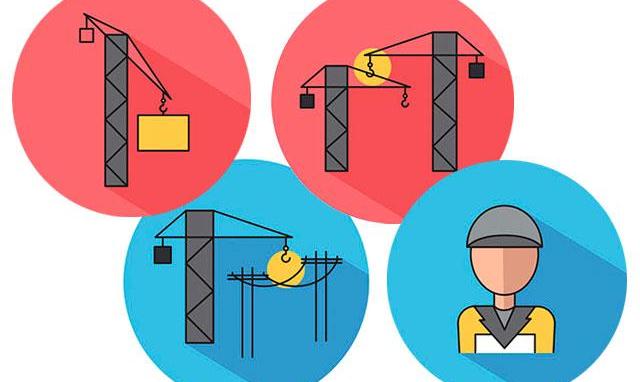
Crane operator
The crane operator must be a person with a great sense of responsibility and who is perfectly informed of the mechanical and electrical parts of the crane such as safety in construction. The operator should rest periodically since the reflections are very important to properly handle the crane.
Special attention deserves the command posts, which from this perspective must respond to ergonomic designs, with the maximum range of accessories that allow the crane operator a comfortable and effective operation.
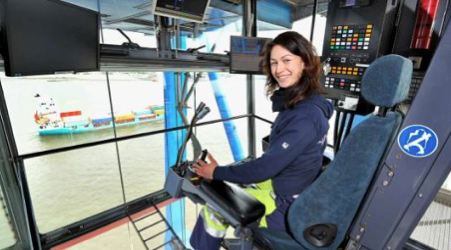
Tower crane operator
The operator whose function is to be the signalman must be identified quickly with a luminous breastplate, to be recognized by the operator of the crane.
The operator has to be guided only by him, through a signal code. The latter does not mean that the rest of the staff does not have the obligation to know the code in order to collaborate when an emergency occurs and in the operation itself.
The collaboration of a properly trained signalman makes the crane operator feel more secure in the maneuvers he must perform, improving work performance.
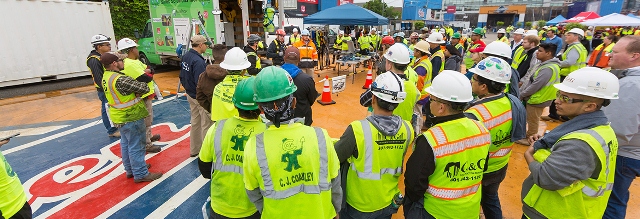
Tower crane safety rules
Health and safety plan – Tower crane safety rules:
When initiating a work, all signers must talk with the operator, to clearly know the work program that will be executed, evaluating their participation.
A signaller must be aware of the importance of his work, this forces him to inform himself about the risks of the operation and to handle with clarity, the possible solutions and safety measures recommended by the technique.
For this you must first of all, have a good knowledge of the load to raise, which is based mainly on having information about it, knowing:
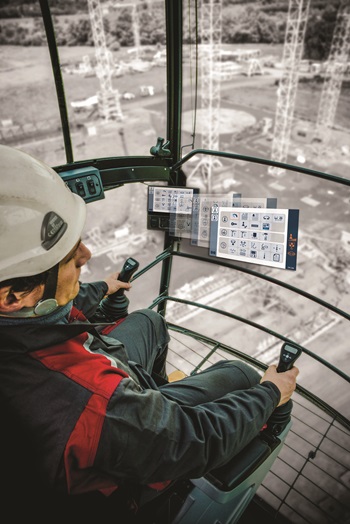
Heavy load transport
The weight of the load is the most important antecedent since the lifting capacity depends technically on the stability and structural resistance of the lifting equipment.
There are several methods to know the weight of a load, the safest is to use a dynamometer, you can also respect the written record that indicates the tare or gross weight of the load or as a practical method of land performs a cubic loading.
Load volume
This antecedent is important for three reasons:
- The load volume is constituted by the surfaces of their faces. A large lateral surface is very sensitive to wind, which can cause pendulum effects or a lateral deviation of the load.
- Determines the minimum necessary space of the aerial evolution and support area of the load.
- In general, in large volume loads, it is difficult to secure the mooring elements to lift the load. The most advisable thing is that the manufacturer or the boss of assembly, order to place hooks of fixation or to draw externally the location of the flanges.
Freight and transport
The shape allows us to locate the centers of gravity of each load.
Type of load: Each load that rises presents risk conditions, due to fragility and/or due to its irregular or weak shape. The signer must have the ability to assess the risk presented by this fragility (glass), or weak packaging, which due to its complex shape when lifted, the load is deformed and deteriorated (cardboard boxes).
Degree of risk of the load: It is the additional intrinsic risk, which presents naturally dangerous loads, such as acids, explosive gases, flammable liquids or explosive charges. In each case, it is mandatory to use a complementary security procedure.
Cranes lifting capacity
This is an operation that the signalman must execute in the most careful way possible because this task is the one that presents the greatest possibility of error, which could have serious consequences for the machine, load, and environment. In this way, it is essential that the signalman has good training in knowledge and mastery of the techniques and use of auxiliary elements.
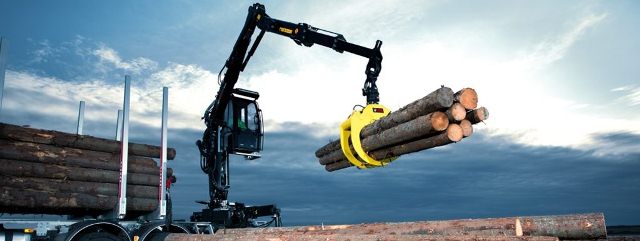
Flange type
At each opportunity, the most suitable type of flange must be selected, the doubt is always in deciding to use straps, slings, chains or rigging. This problem indicates that both operators and signalers must clearly know the techniques of cargo lashing, the advantages of each type of flange and auxiliary elements commonly used.
Construction crane security
Construction safety topics – What are the occupational safety risks in construction?
Construction is an activity that involves exposure to a large number of occupational hazards, some of them serious.
The singularity that construction represents, in relation to the rest of the activity sectors, is mainly due to the mobility, temporality and provisional nature of many of the processes, which make this activity have a different consideration in the field of risk prevention. professionals.
There are risks in this sector, which due to their incidence and severity, have certain peculiarities, are derived from safety and that usually trigger most accidents. Let’s mention some of them.
Construction crane safety rules
Construction safety meeting topics – Construction crane safety rules:
Order and cleaning: In any work activity, to achieve an acceptable degree of safety, It is important to ensure and maintain order and cleanliness. There are numerous accidents caused by bumps and falls as a result of a messy or dirty environment, slippery floors, materials placed out of place and accumulation of surplus or unusable material.
Falls of different levels: The operator of the construction sector suffers accidents due to falls at different levels, mainly in the performance of work on roofs and roofs, exterior or interior hollows and scaffolding.
Entrapment by or between objects: It is that situation that occurs when a person or part of his body is hooked or imprisoned by the mechanism of the machines or between objects, parts or materials.
Entrapment by machine overturning: It is the situation that occurs when an operator or part of his body is imprisoned against the parts of machines or vehicles that, due to unsafe conditions, have lost their stability.
Tower crane risk assessment
Fire Risk: Due to the peculiarity of the construction sector, regarding its state of continuous change and development, it is essential to combat the risk of fire to maintain order and cleanliness, in the different work areas and in the rest of the work.
Explosion Risk: Abrupt release of a large amount of energy that produces a violent and rapid increase in pressure, with a displacement of heat, light, and gases, and may have its origin in different forms of transformation.
Electrical Risk: The construction sector introduces some peculiarities in these facilities that make electrical installations appear as special singularity facilities:
- These are temporary installations.
- They are to a greater or lesser extent subjected to weather conditions.
- They are composed of generally reusable material.
- Much of the installation is movable.
- The level of awareness of the user is lower than in other sectors.
What is the maximum wind speed to operate a crane?
crane operator
Maximum wind speed: mini cranes. The maximum wind speed for safe compact crane use is 22 miles per hour/ 36 kilometers per hour / 10 meters per second.
Construction site safety topics
Every day, at least one construction worker is injured on the job, somewhere in the world. It is a dangerous profession, but not so dangerous that everyone should wonder if any part of it is safe.
There are plenty of guidelines and regulations that need to be followed on construction sites, and almost all of them pertain to the safety of the people who work there.
- Use Caution When Climbing On and Off Equipment
- Stay Away from Operating Machinery
- Use Caution Around Fall Hazards
- Use the Proper Ladder Height
- Keep an Updated First Aid Kit
- Never Use Damaged Equipment
- Never Unplug a Tool by the Cord
- Be Aware of Surroundings at All Times
Tower Crane Safety
wind speeds in UK, involving tower crane suppliers, major contractors, and the Health and Safety Executive, the industry recommended maximum wind speed at which tower cranes operating in the UK must be taken out of service is 38 mph (16.5 m/s, 60 kph).
There is a ‘rule of thumb’ that in the tower climbing industry it is recommended that climbers do not work at wind speeds greater than 20 knots (23 mph) at the working height.
Crane operator apprenticeship training programs vary in length depending on the equipment you will be operating. The programs range from one to three years in length and involve on-the-job training, technical training and a final certificate exam.
Most crane operators get their experience through on-the-job training or apprenticeships. Apprenticeship candidates generally must be 18 years or older, have a school diploma or equivalent and be in fit physical condition.
No, of course, there are some prerequisites you need to attain to be a crane operator. The initial training is your initial step. You still have to go through rigorous apprenticeship training that usually lasts about 1 to 4 years, though you will be paid for doing the apprenticeship training.
The tuition also varies depending on the comprehensiveness of the training course. But to give you a rough estimate of crane training prices, many schools offer complete courses for the cost ranging from $1,500 to $2500, depending on the type of crane you want to get certified in.
To drive any kind of crane on the road the operator will need a drivers license. The type of mobile crane you can drive on the road is dictated by its weight. To drive a mobile crane weighing between 3.5 and 7.5 tonnes a Category C1 Driving Licence is required and a Category C Licence if the crane is over 7.5 tonnes.
The most read
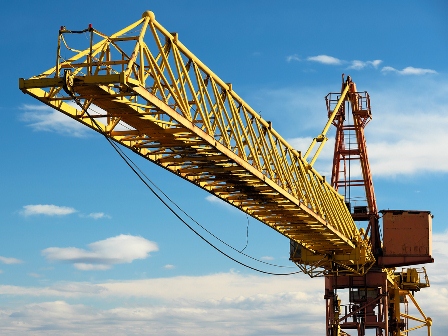
Types of Tower Cranes
Types of Tower Cranes: mobile, boom, features, technical specifications, technical sheet, how to install, fixed, hydraulic. Types of construction cranes
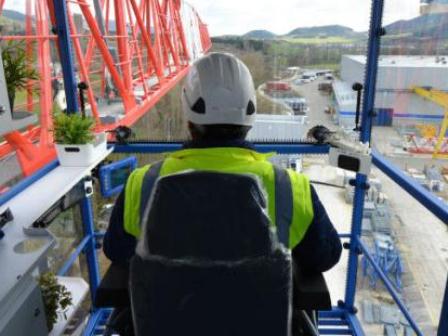
Tower crane Operator
Tower Crane Operator: tower crane operator job description, a day in the Life of a Tower Crane Operator, Crane and Tower Operators.
